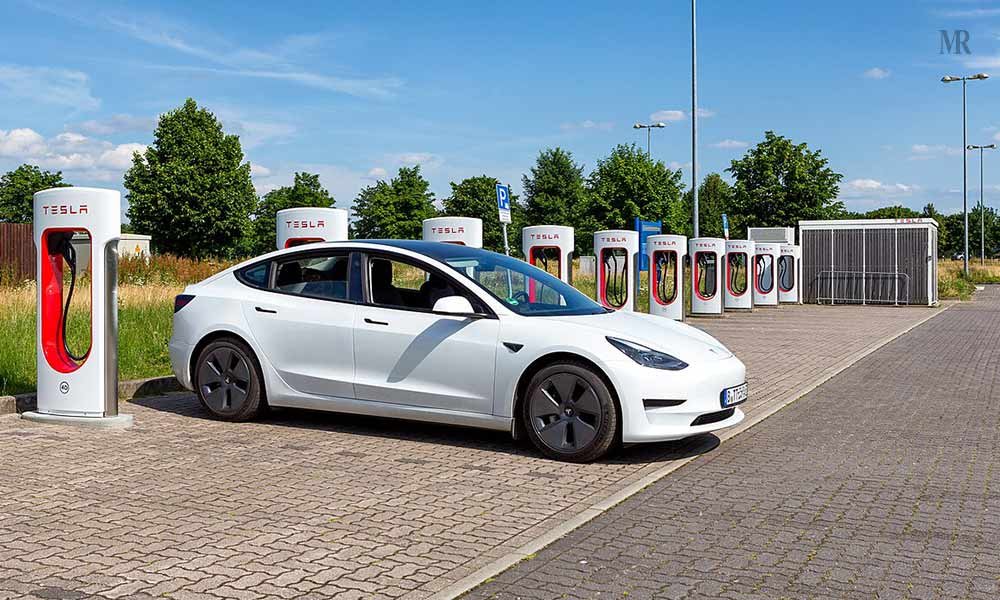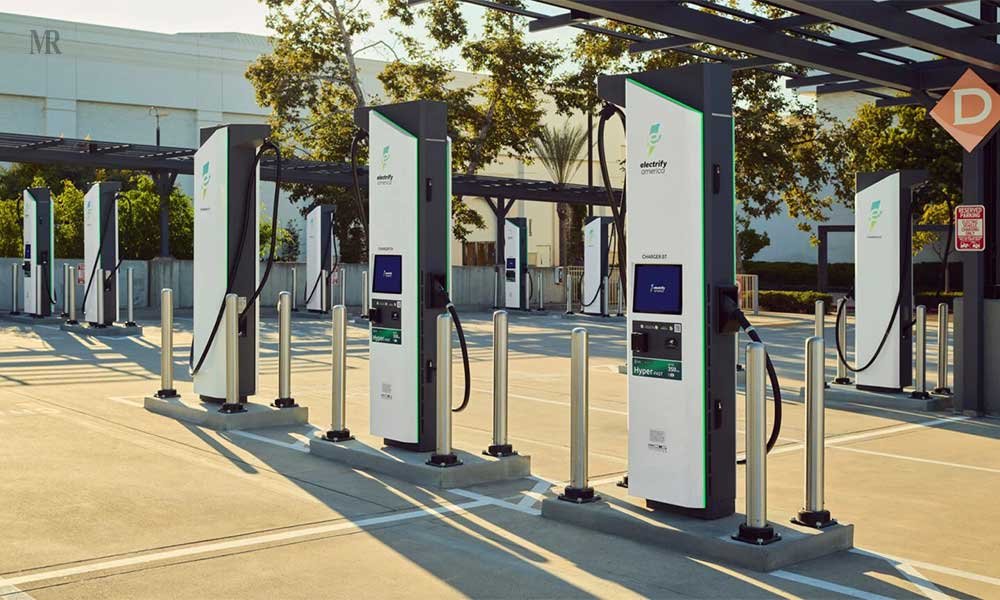The buzz around electric vehicles (EVs) is growing, with more people embracing cleaner commutes, lower fuel costs, and advanced technology. But a key concern for EV owners is: where can you charge your EV when you’re away from home? Public charging networks, like the gas stations of the electric age, provide the energy needed for both short and long journeys. This guide will introduce you to the top 5 Electric Vehicle Charging Networks in the U.S., helping you power your electric adventures with confidence. Whether you’re planning a cross-country road trip or looking into Electric Car Charger Installation in San Jose CA, understanding the best networks out there is key. This guide will introduce you to the top 5 Electric Vehicle Charging Networks in the U.S., helping you power your electric adventures with confidence.
What Makes a Great EV Charging Network?
Before we get into the list, let’s talk about what actually makes an EV charging station company great. It’s not just about having the most chargers—it’s about what works for you. Your driving habits, location, and travel plans all play a role in choosing the right one. Here’s what really matters:
- Network Size & Coverage: The more chargers, the better. A well-spread network means less worry about finding a spot, whether you’re in the city or off the beaten path.
- Charging Speeds: Fast charging (especially DC Fast Chargers) is key for road trips, while Level 2 chargers are great for overnight charging at home or work.
- Ease of Use: A solid app that helps you find stations, check availability, and pay easily—preferably contactless—makes all the difference.
- Reliability & Uptime: Nothing’s worse than pulling up to a broken charger. A reliable network ensures stations actually work when you need them.
- Cost & Membership: Pricing varies—some charge by the kWh, some by the minute, and some offer flat rates. Membership plans can help frequent users save money.
- Connector Types: Compatibility matters. Whether your EV uses NACS, CCS, CHAdeMO, or J1772, the right network should support your car’s plug type.
The Top 5 Electric Vehicle Charging Networks in the US
Considering these key factors, here are five of the leading EV charging companies operating across the United States:
1. ChargePoint Network

ChargePoint has over 64,000 charging locations, making it the electric vehicle charging networks in the U.S. While they offer DC fast chargers, their real strength is their vast network of Level 2 chargers at workplaces, shopping centers, and parking garages—perfect for topping off while you go about your day.
Unlike other networks, ChargePoint doesn’t own most of its stations. Instead, it provides the platform for independent station owners, which helps expand its reach. Their app makes finding and using chargers easy, with real-time availability and cost tracking. ChargePoint supports Level 2 J1772 connectors and DC fast charging with CCS1, CHAdeMO, and NACS, making it a solid choice for everyday charging.
2. Tesla Supercharger

The Tesla Supercharger network is renowned for its high-speed DC fast charging capabilities and has long been a key advantage for Tesla vehicle owners. Dominating the DC fast charging landscape in the US, the 60,000+ Supercharger network is strategically located along major travel routes, making it ideal for long-distance journeys. Historically exclusive to Tesla vehicles, the company has begun opening its network to non-Tesla EVs, particularly those adopting the NACS connector.
What’s cool about Tesla Superchargers is how fast and reliable they are. Plus, if you’re driving a Tesla, the car’s Trip Planner works right with the Supercharger network, making road trips a breeze. They started with their own NACS connector, but now they’re adding “Magic Dock” to some stations, which adds a CCS adapter. That means more EVs can use them.
3. Electrify America

Created as part of the Volkswagen emissions settlement, Electrify America has made a significant commitment to building a nationwide network of high-speed DC fast chargers. Their focus is on providing ultra-fast charging, with 1,000+ stations in North America offering charging speeds up to 150kW and even 350kW. This makes them a strong contender for drivers needing rapid battery replenishment, especially during road trips.
Electrify America is actively expanding its network across the country. You’ll usually find both CCS1 and CHAdeMO plugs at their chargers, so most EVs are covered. Furthermore, Electrify America emphasizes sustainability by backing the energy delivered to its vehicles with 100% renewable energy via renewable energy certificates.
4. EVgo Network

EVgo is another key player in the DC fast charging arena, focusing primarily on urban areas and establishing partnerships with various automakers. Notably, EVgo operates 1,100 exclusively DC fast charging stations and shares Electrify America’s commitment to using 100% renewable energy sources.
EVgo’s network continues to grow, offering chargers compatible with CCS Combo 1, CHAdeMO, and at some locations, the NACS connector (either natively or via adapter). They’ve got these membership deals that can save you some cash if you charge a lot, and because they’re working with major car makers, you might get special perks depending on specific EV brands.
5. Blink Network

Blink Charging operates a network with a significant number of charging stations, primarily focusing on Level 2 chargers, although they are increasingly expanding their DC fast charging infrastructure. Blink often collaborates with municipalities and private businesses to install charging stations at various locations. Their recent acquisition of SemaConnect has further expanded their network footprint.
A key feature of Blink is that membership is free and offers certain benefits to users. They also provide flexible business models for station hosts. While the majority of their current network consists of Level 2 chargers, making them suitable for destination charging, Blink is actively working to increase its DC fast charging capabilities. Blink stations typically support Level 2 charging with J1772 connectors and can accommodate Tesla vehicles with an adapter. Their DC fast chargers support CCS and CHAdeMO connectors.
Summarized Comparison Of The Top 5 EV Charging Networks
| Network Name | Primary Focus | Key Connector Types | Notable Features |
| ChargePoint | Level 2 dominant | J1772, NACS (via adapter), CCS1, CHAdeMO | Largest overall network, strong Level 2 presence, well-regarded app, improving reliability. |
| Tesla Supercharger | DC Fast Charging | NACS (proprietary), CCS (via Magic Dock) | Fastest charging speeds, highly reliable, excellent coverage on major routes, integrated Trip Planner (for Tesla), now opening to non-Tesla. |
| Electrify America | DC Fast Charging | CCS1, CHAdeMO, increasingly NACS | Focus on high-speed charging (up to 350kW), expanding network, commitment to renewable energy. |
| EVgo Network | DC Fast Charging | CCS Combo 1, CHAdeMO, some NACS | Focus on urban areas, 100% renewable energy, partnerships with automakers. |
| Blink Network | Level 2 dominant | J1772, Tesla (via adapter), CCS, CHAdeMO | Significant number of locations (including SemaConnect), free membership, various business models for hosts. |
Finding the Right Network for Your Needs
Choosing the right electric vehicle charging networks depends on your individual circumstances. Consider the following factors:
- Your vehicle’s charging port:
Ensure the network offers connectors that are compatible with your EV. Most non-Tesla EVs in North America use CCS or CHAdeMO for DC fast charging and J1772 for Level 2 charging, while Tesla vehicles primarily use NACS.
- Your typical driving habits:
If you mostly drive within your city, a network with a strong presence of Level 2 chargers might be sufficient. For frequent road trips, prioritize networks with extensive DC fast-charging coverage along your usual routes.
- Network coverage in your area:
Use the mobile apps or websites of these networks to see which ones have a strong presence in your local area and along the routes you frequently travel.
- Pricing and membership options:
Compare the pricing structures of different networks and consider whether a membership plan would be beneficial based on how often you expect to use public charging.
- User reviews and reliability:
Check online reviews and EV community forums for feedback on the reliability of charging stations in your region. Apps like PlugShare can provide valuable insights from other EV drivers.
The Road Ahead: The Future of EV Charging
Big changes are coming to EV charging, and it’s about time. One of the biggest shifts? More automakers are switching to the North American Charging Standard (NACS). For EV owners, that’s a game-changer—no more dealing with different plugs or hunting for the right adapter. Just plug in and charge.
And it’s not just that. The expansion of charging infrastructure continues at a rapid pace, driven by both private EV charging station companies and government initiatives. Advancing battery technology also leads to longer driving ranges and faster charging capabilities. And this further enhances the practicality of EVs. And then there’s all the new stuff they’re coming up with in charging tech itself – things that’ll make charging even easier and quicker. It’s an exciting time!
Conclusion
These five EV charging networks are making it easier than ever to own an electric car, each bringing something unique—whether it’s wide coverage, super-fast charging, renewable energy focus, or tailored solutions for different drivers.
Understanding what each network offers and how it fits your driving habits can take a lot of the guesswork out of charging. The easier and more reliable charging becomes, the more people can truly enjoy the benefits of driving an EV. And with the way things are shaping up, the future of electric cars looks pretty exciting. A strong, hassle-free charging system is what’s going to keep us all moving forward.
















